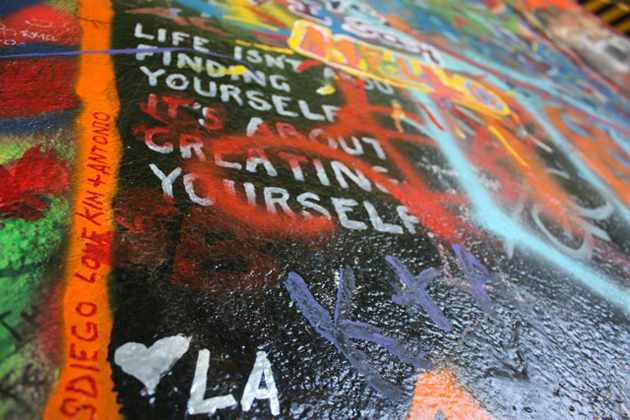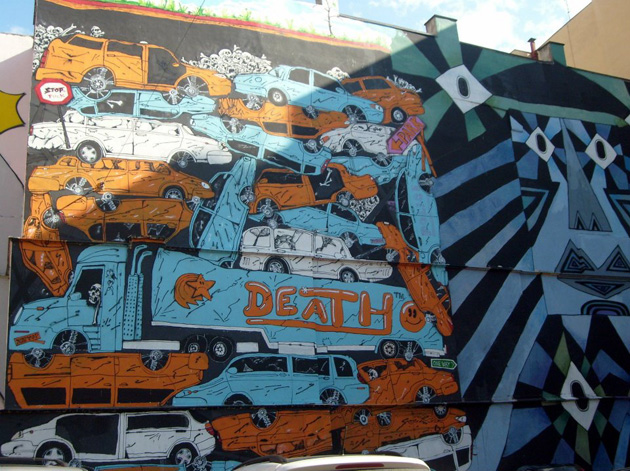 Before the mayor of New York provided “initiatives” like Graffiti Free New York, which cleaned up the City of graffiti, there was artwork over the walls of buildings, near subways and on streets. Sure a lot of graffiti was just kids acting out and writing curse words or drawing funny pictures, but there was something to be said for the art of graffiti. Now it’s rare to see a lot of graffiti as was around back in the eighties and earlier, but when one does, it is often art.
Before the mayor of New York provided “initiatives” like Graffiti Free New York, which cleaned up the City of graffiti, there was artwork over the walls of buildings, near subways and on streets. Sure a lot of graffiti was just kids acting out and writing curse words or drawing funny pictures, but there was something to be said for the art of graffiti. Now it’s rare to see a lot of graffiti as was around back in the eighties and earlier, but when one does, it is often art.
Prague is sort of stuck in a time warp. The city and country haven’t been out of Communism rule for that long, so it’s interesting to walk around such a beautifully historical city and see graffiti on walls everywhere you go. One can only assume this is a much like New York in the eighties, some of it is good and some of it is just kids having fun in the cover of darkness.

Prague has always had a love affair with art, music and culture. For as much as they are “backwards”, Czech people are also known for their innovation in the art world. It’s no surprise that orchestral music thrived here, that writers like Franz Kafka are known throughout the world and that some of the world’s most beautiful hand-blown glass and crystal comes from this part of the world. Czech people are artists and that art oftentimes ends up in the most unassuming of places.
There are a few places that everyone recognizes quickly for graffiti when in Prague. Between the Narodini divadlo and Narodini trida stops on the 22 tram, there is a huge wall of a building covered in an art piece with a quote that states “for those who come from nothing”. Everywhere you go; there are small hidden gems of artwork and phrases that speak to the struggle that this city and this country have survived through.

But the most famous and most well-known graffiti wall is what is commonly known as the Lennon Wall. In the eighties, when Prague was a city still under Communist rule, teens and young adults would use the wall as a tool for sharing their thoughts and grievances. The anonymity allowed them to say what they wanted without being punished. And as a people and City that is so in touch with the arts, why wouldn’t they use such an unacceptable form to communicate such progressive thoughts?
Within a day or so, the wall would be painted over. Eventually the lyrics of John Lennon as well as poems, paintings and flowers would appear once again on the wall. This didn’t stop them from being painted over. However, within days the artwork appeared again. This type of graffiti may have been unappealing to the owners or to the Communist regime in the past, but today it is a symbol of what art, youth and ideals can do.
Although the Lennon wall is allowed to stay these days, every so often it is painted over and within hours, the artwork is back up. The endurance of the graffiti art despite what is considered “orderly” has shown that Prague believes art can thrive anywhere. That art isn’t just something for museums and galleries.

Interestingly enough, the location of the Lennon wall Velkopřevorské náměstí (Grand Priory Square), Malá Strana is on the other side of a restaurant that overlooks a garden and a huge tree. This tree is said to be where Beethoven spent a lot of his time. And while to us he may seem to be a proper figure, for his time, Beethoven was a musical innovator.
It’s clear that as Prague changes, not much has changed since it was first built. The roots of Prague is still music, although it has since added more than just orchestral music and other areas of art are all affected by it. It can be felt in the cobblestone streets, in theater halls and in restaurants.




